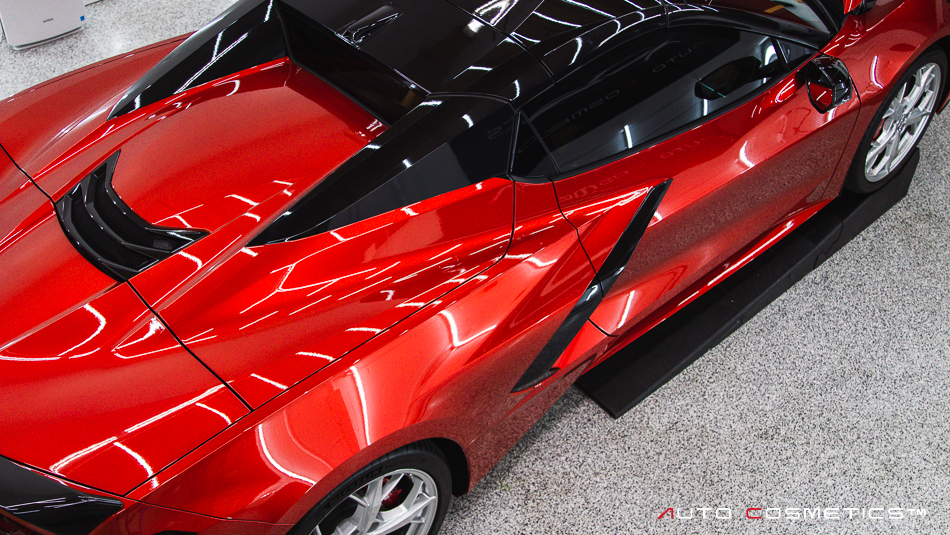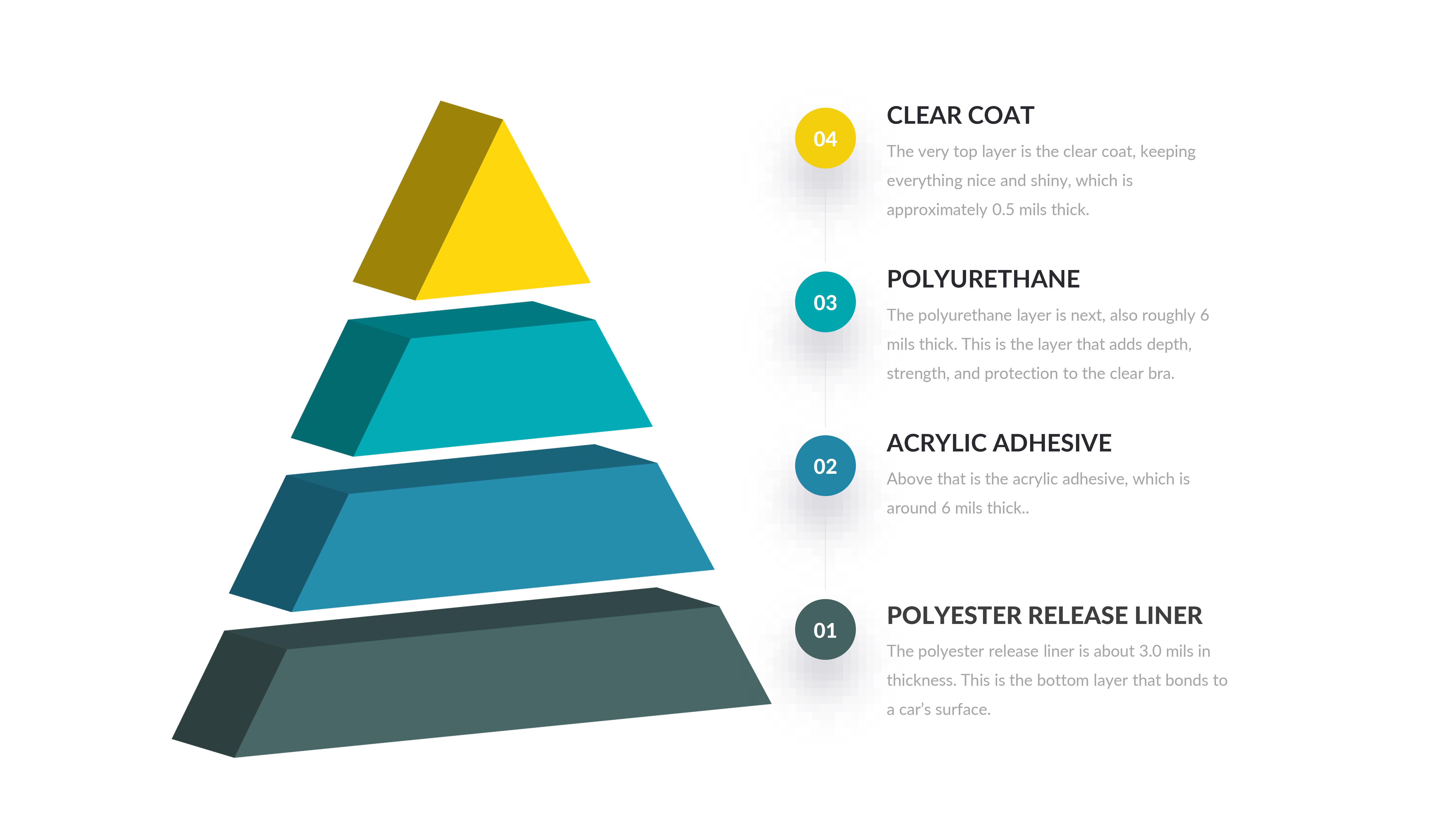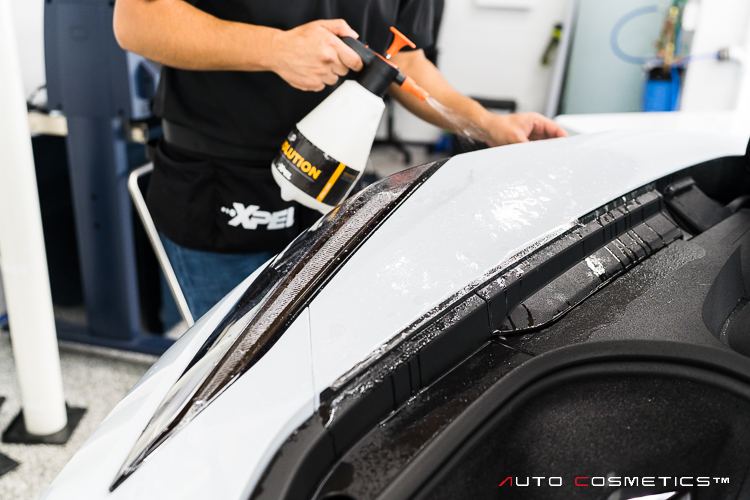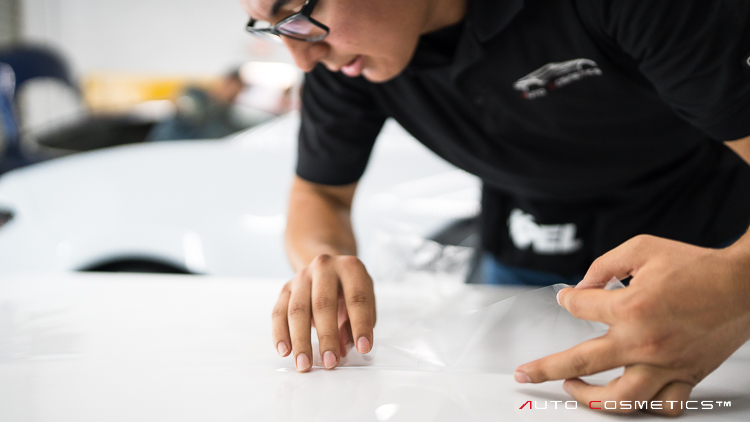Tips for Buying the Best Paint Protection Film for Cars

Paint protection film (PPF), often called a clear bra, is one of the most valuable and most overlooked components of car maintenance. A good product can last up to ten years and keep a car looking like it just rolled off the lot.
The top-of-the-line films won’t blister, won’t turn yellow over time, or peel up at the edges. So what are the best paint protection films for cars, and what makes them so great? Some key questions need to be answered before you go all-in on a clear bra, including:
If you’ve thought about having PPF installed on your vehicle, you’ll want to get familiar with some important information that will help you choose what’s best for your ride.
What Makes a Good Paint Protection Film?
A good PPF starts with two things: its materials and its manufacturing process.
Materials

There are four layers of materials that work together to comprise high-quality clear bras:
Polyester release liner
Acrylic adhesive
Polyurethane
Clear coat
The polyester release liner is about 3.0 mils in thickness. This is the bottom layer that bonds to a car’s surface. Above that is the acrylic adhesive, which is around six (6) mils thick. The polyurethane layer is next, also roughly six mils thick. This is the layer that adds depth, strength, and protection to the clear bra. The very top layer is the clear coat, keeping everything nice and shiny, approximately 0.5 mils thick.
Manufacturing
The main component of the paint protection film is urethane, which is a strong, versatile polymer. It’s lightweight, flexible, transparent, and highly resistant to impact, corrosion, and abrasion.
Urethane technology was first developed during the Vietnam War to fix the problem of U.S. helicopters crashing from damaged rotor blades. 3M and the military worked together to create and manufacture the technology to save lives, choppers, and money.
The use of urethane film expanded to fighter jets later in the 1970s and continued to be used for an ever-widening array of purposes. Since the technology has been so successful, it is still being manufactured today.
What Should You Look for in a Good Clear Bra?

What features separate the best PPF from the not-so-great? Read on to find out!
A High Level of Protection
The most important feature of protective film for cars is, of course, the level of protection it provides. The best films offer a superior barrier against UV damage, oil, bugs, and scratches from rocks, dirt, flying debris, and other hazards.
PPF with a thickness of about 6 mils (not including the adhesive, clearcoat, or release liner) is recommended to provide top-tier protection. Low-quality films are often thinner.
Transparency
The entire purpose of the paint protection film is to keep the paint looking brand-new, not to cover up, distort, or change the look of the paint. Premium films for cars are crystal clear to the naked eye and retain that transparency over the years.
Previous generations of PPF would yellow over time; however, it was eventually discovered that it was the adhesive that was yellowing rather than the actual film. Since then, manufacturers have developed adhesives that are not susceptible to premature discoloration.
Longevity
The best films are those that are backed by industry-leading warranties. For example, XPEL Ultimate is warrantied for ten years after installation and uses Edge Seal Technology to keep the film in place, reducing the risk of lifting and peeling.
Factors that most heavily impact the lifespan of clear bras include appropriate care by the car owner and proper professional installation. The best professionally installed films have a reputation for high performance well beyond the 10-year mark when they are properly maintained.
Self-Healing Ability
Sounds like something from the future, doesn’t it? Well, the future is here with self-healing paint protection films. Small scratches, scuffs, and even spray paint will disappear with a little bit of heat applied to the film.
The heat causes PPF to return to a low-energy state, in which its appearance becomes seamless and smooth. Spray paint and other unwanted substances wipe right off after heat is applied, revealing the perfect finish of the film once again.
What Are the Advantages of Car Protective Film?

Clear bras are designed to help car owners avoid the expense and hassle of repairing damaged paint. After all, a decent paint job can cost $3,500 or more!
However, there are other advantages, too. Car film can save interior metal components from UV damage, and a good PPF will help maintain the resale value of your car, thanks to the pristine paint job it can protect for years.
Even better — you’ll save lots of time and frustration by not having to try to buff scratches out or remove oil or bird droppings yourself!
What Is the Process for Buying and Installing PPF?
You’ll need to start by deciding how much of your car’s exterior you want to protect. You can choose to cover all high-impact areas, like rocker panels, headlights, side mirrors, and bumpers. Instead, you might choose a full-front application. Finally, you could cover that beautiful car bumper to bumper in a full car application.
Certified experts must do the installation to maintain the integrity and transparency of the clear bra (not to mention to validate the warranty).
Professional installation includes extremely important prep steps you won’t get if you or a friend try to apply PPF on your own. These include surface decontamination and high-accuracy film customizations via advanced machinery and software.
Does Paint Protection Film Damage Paint?
Top-quality PPF is easy to peel off at the end of its lifespan, and it does not cause lasting harm or compromise the paint of your car in any way when it is properly removed. It’s recommended to have the film removed by a professional, especially if you’ll be replacing it with a new film.
What’s the Difference Between Self-Healing and Instant-Healing PPF?
Self-healing PPF is capable of “erasing” scuffs and light scratches with the aid of a little bit of heat. Instant healing would be defined as healing without the assistance of heat or anything else.
For some high-quality films like XPEL Ultimate, minor scratches will heal in about 30-60 minutes at room temperature, and warmer environments will shorten that healing time. Warm water (120 degrees F) can be poured into an area to accelerate the process in colder conditions.
Which PPF Is Right for You?
There are several different companies and brands of paint protection film, but they are not all created equally. Two popular brands are XPEL and 3M. While 3M has been in the industry the longest and is the largest company, XPEL is exclusively about paint protection film and has earned an incredible reputation.
XPEL also developed software for installers with access to hundreds of vehicle templates, allowing experts to apply film without any cutting on paint surfaces. 3M also has developed its own software, as well. Both companies make paint protection film in both gloss and matte finishes. 3M films are warrantied for seven years, while XPEL carries a warranty of ten years.
Contact Auto Cosmetics to choose the best PPF for your ride and get it professionally and perfectly installed. Our experts are certified in and recommend XPEL Ultimate PPF installation to keep your car looking brand-new for the next decade. Give us a call today to learn more!
